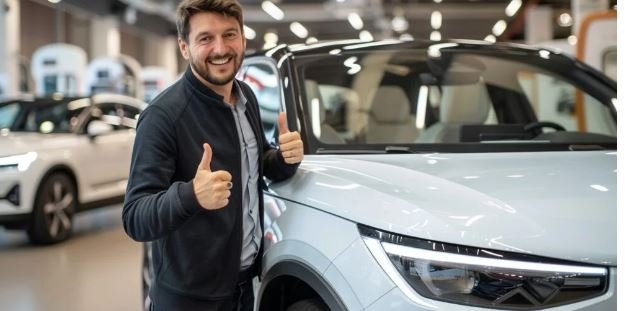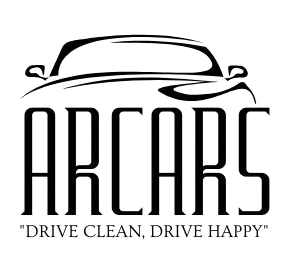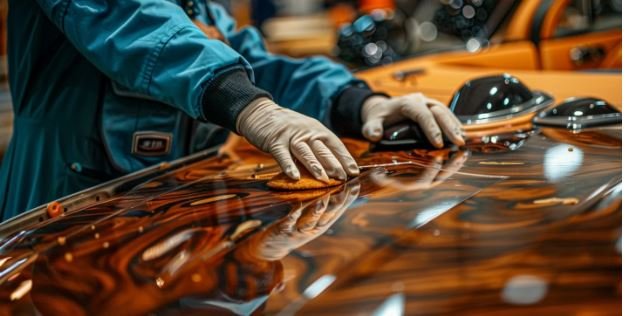Paint protection films (PPF) are becoming increasingly common among both casual drivers and car enthusiasts. The desire to maintain brand new cars while protecting the paint from the abrasive effects of normal driving is driving this increased demand. In this in-depth analysis, we examine the many pros and cons of paint protection films and provide you with insights based on actual experience and market statistics.
About paint protection film
PPF, also called clear bra or clear mask, is a thermoplastic urethane film that is transparent and designed to protect a car’s paintwork from various types of damage. I have used and analyzed PPF extensively and can therefore confidently say that it is a good approach to maintaining the original appearance of a car.
PPF covers the vehicle’s painted surfaces and creates a strong, undetectable protection. Shocks from stone chips, light scratches and other physical impacts that could otherwise damage the paint are absorbed by this protective layer. The robust nature of the film repels even large impacts and thus protects the paint underneath. In addition, PPF provides excellent UV protection and prevents fading or color deterioration due to prolonged exposure to sunlight.
The current PPF also has hydrophobic properties. These properties repel water and prevent water spots from forming. This makes the car easier to maintain and clean. Dirt sticks less to the surface.
In addition, advanced PPF materials are capable of self-healing. The heat from the sun or a heat gun can remove small scratches and swirls. Thanks to the self-healing function, the film remains clear and discreet. It provides continuous and excellent protection while helping to maintain the appearance of the vehicle.
Before we get into the many benefits of PPF, it’s important to also consider some of the challenges and potential drawbacks. These are not necessarily major issues, but they are points that some car owners find controversial. Let’s first examine these aspects to give you a balanced overview.
Disadvantages of paint protection film
1- High acquisition costs
It is the amount initially spent on applying paint protection film that worries many. A paint protection film can cost anywhere from 500 to over 5,000 euros, depending on your car’s size and the film’s quality. Several factors affect PPF prices, including the type and quality of the film, the size and complexity of your vehicle, and the reputation and experience of the installer. For example, if you want to paint an entire luxury vehicle with PPF, it can cost more than $6,000. Also, if you can’t invest large amounts right away, these upfront costs alone can be prohibitive.
Still, future savings on paint repairs and maintenance should be considered. Depending on the extent of the damage and the type of car, such standard paint jobs can cost between $1,000 and $5,000. So if you are willing to keep your car for several years, an investment in PPF can save you money in the long run by not having to paint it repeatedly. So despite the high purchase costs, we can say that it is actually worth it for several reasons
2- Need professional installation
One of the problems is the requirement for professional application of car paint protection films. The method of properly applying PPF is quite complex, although one could buy DIY kits. Make sure there are no visible edges, wrinkles or bubbles to make it perfect. The knowledge and skills of a professional installer guarantee flawless application and an excellent film image.
It can be a bit difficult to find a qualified installation when you need one. Choosing a person with a solid track record in PPF installation is crucial. Insufficient installation effort can affect the appearance and effectiveness of the film. To achieve the best results and ensure that your car looks as beautiful as possible with the new protective coating, it is imperative that you take the time to choose a reputable specialist.
3- Maintenance and care requirements
Caring for paint protection film requires special care to ensure it functions correctly and looks good. Although PPF is durable, it can still be scratched or damaged if not cared for properly. Car owners should use certain cleaning agents and methods to avoid damaging the film.
Routine maintenance includes regular washing and sometimes the application of a special sealant to maintain water-repellent properties. This extra step can feel like more work compared to regular painting, which may only require washing and waxing. However, this effort is important for the film to last a long time and the car to look nice. For some people this additional maintenance effort may seem like a disadvantage, but it is important to ensure that PPF provides the strong protection it is known for.
4- Limited lifespan
The life of a paint protection film (PPF) is usually five to ten years, depending on the quality and conditions to which it is exposed. The film may become discolored, scratched or damaged over time. In such cases, a new PPF must be installed.
When replacing the PPF, the old film is removed and a new one is applied. This can be almost as expensive as the initial installation. For example, replacing a high-value PPF with a seven-year term costing $3,000 could mean a car owner having to spend a similar amount again. If someone wants to do this once and at no extra cost, maybe it’s not so good.
However, there are ways to reduce these costs. Some PPF manufacturers already offer PPFs that have a lifespan of more than 10 years. If you choose better films like this, you wouldn’t have to replace them as often, making the investment worth it in the end.
Advantages of a paint protection film
1- Protection against scratches and splinters
Paint protection films have the great advantage of protecting the paint on a vehicle from scratches and small dents. I have seen myself how high the PPF can be when driving mainly on unpaved roads. It is an absorbent bed for small stone chips and dust that would otherwise damage or chip your car’s paint. Industry data shows that cars equipped with PPF have 90% fewer chips than cars without PPF.
This protection is essential, especially for vehicles in the higher price range, as even minor damage to the paint can lead to a decrease in value. Over time, this will help drivers avoid expensive paint jobs such as color corrections and touch-ups. Hence, spending the initial setup price on PPF is definitely a wise decision in the long run.
2- UV radiation and corrosion resistance
Paint protection films have excellent resistance to UV radiation and corrosion. For example, if a vehicle’s paint can be damaged over time due to fading caused by UV rays, PPF would not allow these destructive rays to pass through, keeping the color and gloss constant. For example, research has shown that cars with PPF looked original 30% longer than cars without PPF.
In addition, PPF is a type of barrier against corrosive substances such as bird droppings, tree trimmings or road salt. If left unattended for an extended period of time, these contaminants can also remove clearcoats and varnishes. This risk is greatly reduced by PPF, which ensures that the exterior remains clean for a long time before deterioration occurs.

3- Self-healing properties
When your film has a bruise or acrobat mark, increasing the temperature will remove it. Thanks to this feature, the film remains shiny and clear, which is very important for car owners who want to maintain the flawless appearance of their car.
If I remember correctly, I once saw a deep scratch on my car’s PPF caused by a tree branch. The scratch almost disappeared after the car sat in the sun for a few hours. This type of curing not only ensures that the film lasts longer, but also ensures that the vehicle looks good for a long time without having to do a lot of work on it.
4- Increases aesthetics
While some argue that installing wraps can take away from an automobile’s inherent beauty, high-quality PPF actually improves the vehicle’s aesthetics. The film provides a glossy appearance that makes the color look more vibrant and polished. For car enthusiasts, this extra shine is a bonus that complements the overall look of the vehicle.
When properly applied to cars, PPF can be virtually invisible and preserve the car’s original design and color. It simply means that even though the car benefits from an extra layer of protection, it retains its intended appearance. With improved looks and safety features, PPF becomes the preferred choice for those who value the appearance of their vehicles.
5- Customizable coverage options
By installing PPF, car owners can protect the areas that are likely to be damaged. For example, only the front bumper, hood and side mirrors can be equipped with PPF, or it can cover the entire body panels. This adaptability is ideal for all budgets and protection needs.
Customizable options let you protect the best parts of your car. An example of this is driving in busy cities, where it is important to protect the front of your vehicle from traffic damage. In this way, a tailored approach ensures that you maximize the benefits of your investment without unnecessary costs.
6- Extends the life of the vehicle
Paint protection films can extend the life of a vehicle’s paint for years by providing a protective layer against various damaging elements. This is especially important for those who plan to keep their vehicle for a long time. A well-maintained painted car not only makes the car look good, but also increases its resale value and structural stability without incurring any additional costs.
In one example, it has been noted that vehicles with PPF last significantly longer than vehicles without PPF in terms of maintaining their original paint and structural integrity. Because of this aging, these vehicles require less repainting and bodywork, ultimately saving the owners of these vehicles time and money.
Perception of PPF-equipped cars in the market
When cars have paint protection film installed, their resale value is better. Studies by Kelley Blue Book indicate that an automobile can sell for between 10% and 15% more than someone else’s if its exterior is maintained properly. This is the case for automobiles with PPF since purchasers are prepared to shell out extra cash for a vehicle that is shielded against paint damage.
Compare PPF with other paint protection options
PPF vs. ceramic coating
When comparing paint protection film to a ceramic coating, it is important to understand their unique advantages. Ceramic coatings form a durable, hydrophobic layer that repels water and dirt, making the car easier to clean. They also provide some protection against minor scratches and UV rays. However, ceramic coatings do not provide the same physical protection against stone chips and more serious scratches as PPF.
PPF vs vinyl film
Vinyl film is another popular alternative to car paint protection film. They offer the flexibility to change the color and finish of a vehicle, creating a unique and customized look. However, vinyl films are primarily aesthetic in nature and do not provide the same protection as PPF. Vinyl is more susceptible to damage from stone chips, scratches and UV rays compared to PPF’s durable, protective properties.
For example, while a vinyl wrap may temporarily improve the appearance of a car, it cannot prevent the type of damage that PPF is designed to prevent. Car owners who want both protection and aesthetic customization often combine vinyl wraps with PPF and apply the wrap to critical locations to ensure comprehensive protection
.
Conclusion: Is a paint protection film worth it?
In conclusion, every car owner should carefully weigh the pros and cons of PPF. While the high initial cost and need for professional installation are significant drawbacks, the benefits of superior protection, improved aesthetics and longer vehicle life make PPF a worthwhile investment for many. This paint protection film review highlights that despite its disadvantages as an invisible protection, PPF offers a level of protection and value that other options simply cannot match.
In the end, personal priorities and the particular requirements of the car determine if PPF is worthwhile. It is recommended to use a paint protection film if you value the long-term maintenance of your car’s beauty and are prepared to pay for expert protection. read more.

